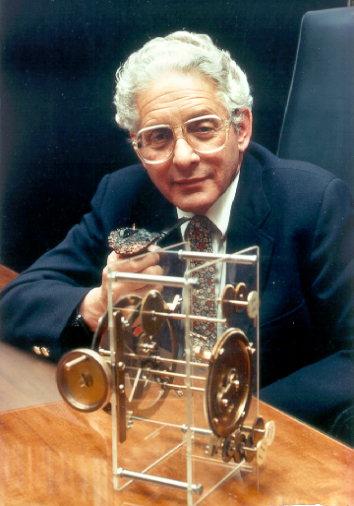
When British-born physicist Derek de Solla Price decided to teach himself the history of science in the late 1940s, he didn't mess around. He acquired a full set of the Philosophical Transactions of the Royal Society (supposedly for the library of Raffles College, Singapore, where he had just taken up a teaching position) and used them as bedtime reading.
Starting with the first volume from 1665, he worked his way through the heavy journals, placing the finished volumes into neat, chronological piles on his bedside shelves. Then he noticed something strange. Though each stack covered the same number of decades, each pile was twice as tall as the one before - in effect forming an exponential graph against his bedroom wall.
Price raced to check modern journals in various fields of science and found that the same relationship held. By counting the number of papers published in journals, it was possible to describe mathematically the accumulation of scientific knowledge. Science was accelerating exponentially over time.
Thanks to this bedside observation, Price became fascinated by the measurement and progress of knowledge. He went on to pioneer research into the 2000-year-old Antikythera mechanism (see chapters 4 and 5 of my book, Decoding the Heavens). But he also founded an entire field of research - scientometrics, or the science of science itself. He is best known for his 1963 book, Little Science, Big Science, which explored the incredible expansion of science. There's also a list of his publications here.
Among other things, Price concluded that science had grown by five orders of magnitude (more than 16 doublings) since the formation of the Royal Society, meaning that "80 to 90 per cent of all the scientists who have ever lived are alive now".
He also showed that the pattern of recent citations among the world's scientific papers could reveal areas where research was actively progressing, not to mention the relative importance to science of particular journals, authors, institutions and even countries. And he declared the secret of distinguishing science from non-science: the higher the proportion of citations of newer papers (those less than five years old) compared to old ones (more than 20 years old), the more likely that the article is scientific.
Historians were a little sniffy about Price's quantitative approach, but scientists loved it. Price himself believed he was uncovering universal truths about the nature of knowledge and where it was taking humanity. Little green aliens coming to Earth would understand the Planck constant, the velocity of light, or the wave equation no matter how much they differ from us, Price mused. He felt that they would surely also recognise his scientometrics.
Price (pictured with his model of the Antikythera mechanism) died in 1983. But his scientometrics is still going strong. An article in the Independent yesterday (basically a rewrite of a column by Harvard postdoc and science writer Samuel Arbesman in the Boston Globe last month) describes how Arbesman has been using scientometric techniques to address the question of whether science is getting more difficult.
Arbesman analysed research into mammalian species, asteroids and chemical elements by plotting the average size of new discoveries over time. He assumed that the smaller species and asteroids are, the harder they are to find, and that for elements the reverse is true.
He found that in every case, the ease of discovery is going down over time, not just in a linear fashion, but exponentially. In other words (in these simplified examples at least) it is becoming exponentially more difficult to make new discoveries. "To find a slightly smaller mammal, or a slightly heavier chemical element, you can't just expend a bit more effort," says Arbesman. "Sometimes you have to expend orders of magnitude more."
This doesn't mean that science is slowing down, however. As Price originally pointed out, the number of scientists is increasing exponentially too. Funding levels have also been rising fast, especially for fields such as particle physics and medical research. And in some areas, exponential increases in computer processing power are also keeping the discovery rate high.
That last point is something that Price would have appreciated. Perhaps because of his work on the ancient Antikythera mechanism, he was fascinated by the potential of computers. Back in the early 1980s, when most modern computers were still slow grey boxes with the simplest of circuitry and just a few kilobytes of memory, he predicted that they would become the next technological driver of knowledge.
In fact, he reckoned that the world was entering a "computer age", in which networks of three-dimensional computer chips would allow machines to jump to conclusions and to think creatively, just like people. We'll have to wait and see whether than particular prediction comes true.